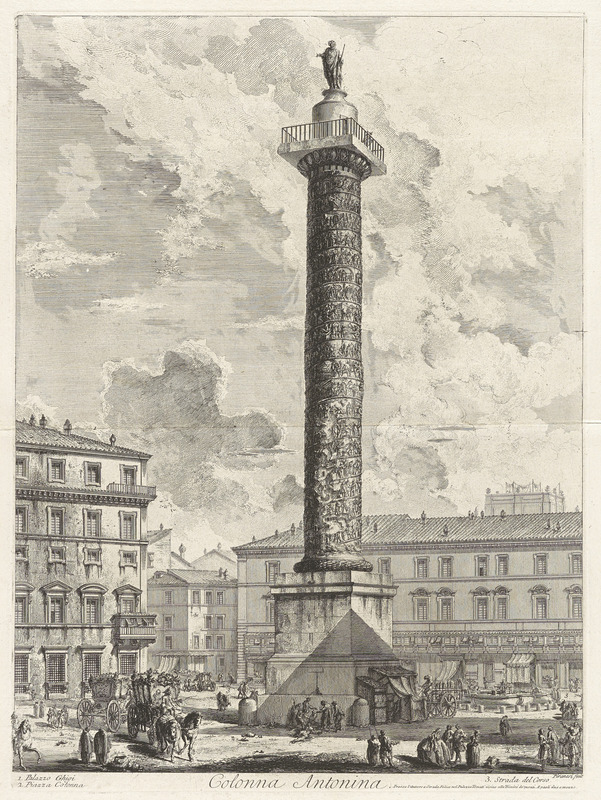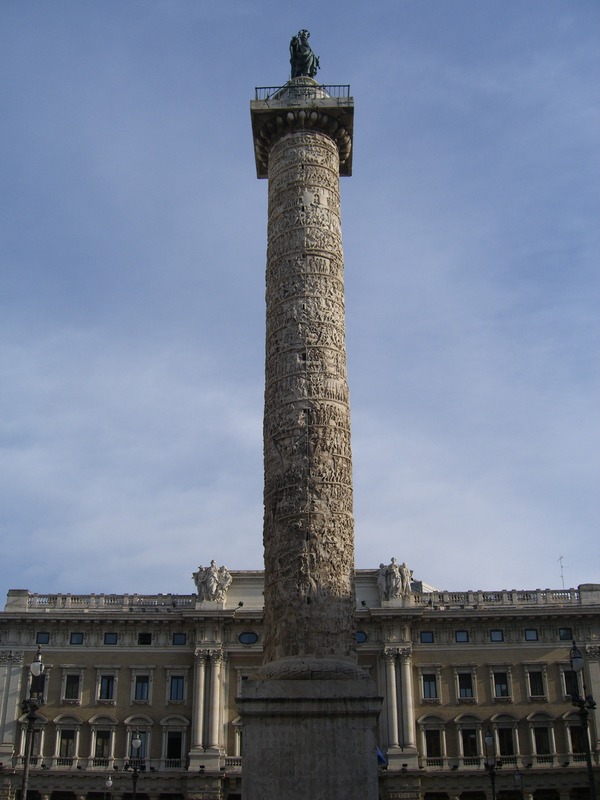Conservation
During the sixteenth-century, Pope Sixtus V carried out restoration work on the Column of Marcus Aurelius. The Italian architect Domenico Fontana oversaw construction on the monument from 1588-89. During this time, the base of the column was rebuilt, removing the ancient reliefs which had until then survived. The restorative efforts also focused on the column’s shaft, as the interior of the spiral staircase and the missing parts of the frieze were repaired. As the original statue of Marcus Aurelius had been destroyed, possibly by earthquakes, a bronze statue of Saint Paul was placed on top of the column. Finally, four inscriptions were positioned at the base of the monument, where the original ancient inscriptions had once been carved. The first inscription (west), states that the monument was dedicated by Marcus Aurelius to his predecessor Antoninus Pius. The second inscription (south), records the work completed by the restoration. The third statement (east) proclaims the monument’s new Christian role, through the dedication to Saint Paul. Finally, the fourth inscription (north) establishes itself as a column dedicated to the victory of Paul and Christianity over the Romans and barbarians. Thus, the surviving monument no longer symbolizes the power of Imperial Rome, but rather the triumphant Church of the Counter-Reformation.1
1. Coarelli, "The Restoration of the Column," in The Column of Marcus Aurelius, ed. Bruno Bruzzi (Rome: Editore Colombo, 2008), 73-81.

